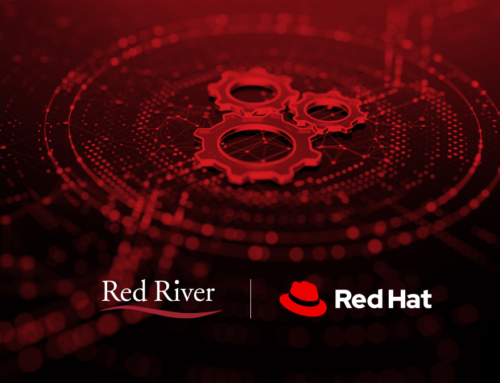
9 Things Your Business Must Do to Fit in the NIST CMMC Framework
Update: As of November 10, 2025, the CMMC has gone into full effect. Federal contractors must now demonstrate full compliance with CMMC as part of all of their contracts going forward. If your organization needs help meeting CMMC requirements, Red River can help. Contact us today! In the meantime, we hope you enjoy our blog explaining the things your business needs to do to be in compliance, even if the deadline has since passed.
You’re running out of time. The CMMC 2.0 compliance requirements are just around the corner. But the new CMMC models (and the changes that have been made) can seem complex and intimidating.
What does your business need to do to fit in with the NIST CMMC framework?
Let’s look at some of the major things your business has to do to fit the NIST CMMC framework—and how you can make the entire process easier.
Why You Should Begin with the Level 1 Framework
The CMMC 2.0 has multiple levels. Each level builds on the previous. So, if you’re a Level 1 business, you need to meet Level 1 standards. But if you’re Level 2, you need to meet Level 2 and Level 1 standards.
It’s easiest to start with the Level 1 controls. Once you achieve Level 1 controls (which are the most essential aspects of cybersecurity hygiene), you can then move on to Level 2 and Level 3, if desired and needed.
Level 2 and Level 3 will not override the Level 1 framework but will instead build upon it. There’s only one exception: when choosing software utilities. When choosing new software platforms, consider the level of control you need. Some software suites may meet Level 1 compliance but not Level 2 or Level 3.
9 Things Your Business Must Do for CMMC Certification

These are things your business must do for CMMC certification and compliance regardless of level and scope. If you’re looking for areas to start working on now, these are the best options.
1. Determine the full scope of your CMMC level and compliance
Your first step is to understand what’s required for each CMMC level and how it applies to your business. The Department of Defense has provided a helpful self-assessment guide that can help you determine your company’s specific needs.
The levels range from basic hygiene requirements (Level 1) to more comprehensive (Level 3). You don’t need to invest in a level higher than you strictly need.
2. Conduct a self-assessment and full system audit
After you understand what’s required, you need to take a good look at your current cybersecurity posture. This will help you determine where your gaps are and what needs to be improved.
To get started, the DOD has created a self-assessment CMMC checklist. You can use this to identify vulnerabilities in five key areas: asset management, identification and authentication, media protection, physical protection and security awareness and training.
3. Prioritize your areas of improvement
If something is, for instance, easy to do and high impact, you should do that first. If something is hard to do and low impact, you should do that last.
While you will need to fulfill every item of the CMMC checklist (to the level of certification you desire), it is a process and will take time. Prioritizing your areas of improvement and making those changes slowly can help your organization tackle the project with minimal disruption.
4. Start to compile and build your process documentation
The CMMC has strict requirements for documentation. Level 1 requires basic documentation, while Level 3 requires extensive, detailed documentation. But both require some documentation, so start building it now. As you improve your processes and cybersecurity posture, document everything. Don’t wait to document everything until after you’ve developed your processes.
5. Implement zero-trust or least-privilege practices
Zero trust and least privilege are essential cybersecurity best practices. They help ensure that only the people who need access to data or systems have access to them. Your goal should always be zero trust, but some organizations may need least privilege as an intermediary step to avoid disruption.
There are many ways to implement these practices, but one way is through identity and access management (IAM). IAM tools can help you control who has access to what and when they have access. This is an essential step in securing your data and systems.
6. Secure physical access to your devices and services
Physical access is one of the most important aspects of security. If someone has physical access to your devices, they can bypass all your other security measures.
Make sure that only authorized personnel have access to your data center, server room and other key locations in your office. Use locks, badging systems and cameras to control and monitor physical access. Even Level 1 CMMC compliance requires some level of control over physical access.
7. Invest in robust auditing logs and monitoring services
Auditing and logging are essential for compliance. You need to be able to track and monitor activity on your systems. This data can help you understand what’s going on in your environment and identify potential threats.
There are many monitoring and logging tools available, so choose the ones that make the most sense for your organization. Make sure they meet your compliance requirements; you don’t want to transition to a platform only to find that the platform doesn’t fit the CMMC.
8. Create a reporting infrastructure for system flaws
As part of your compliance efforts, you need to have a reporting infrastructure in place for system flaws. This includes a process for reporting vulnerabilities and incidents, as well as a way to track them.
This reporting infrastructure will be essential for helping you identify and fix problems quickly. It’s also required even for Level 1 compliance.
9. Have a third-party organization conduct a gap assessment
Once you’ve started to make changes in your organization, it’s a good idea to have a third-party organization conduct a gap assessment. This will help you determine where your gaps are and what needs to be improved.
A third-party organization can help you not only with the gap assessment but also to create a roadmap toward improvement. Once you’re ready for the certification, your third-party organization can further help you make the changes that are needed throughout the certification process.
Getting Certified with the NIST CMMC Framework
Don’t worry. You don’t need to do this alone. If you’re trying to get your business CMMC compliant before the deadline, reach out for help. Not only can Red River help your organization with a third-party audit and gap assessment, but we can also get your organization in shape for CMMC certification.
While the CMMC certification process may be rigorous, organizations do have time to fix any gaps or weaknesses discovered. And you will need CMMC certification if you want to deal with government entities and data. Contact Red River today to start with your CMMC certification journey.

written by
Corrin Jones
Corrin Jones is the Director of Digital Demand Generation. With over ten years of experience, she specializes in creating content and executing campaigns to drive growth and revenue. Connect with Corrin on LinkedIn.




